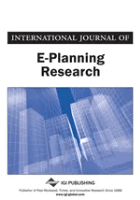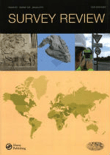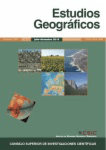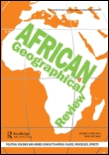
GeoMedia
Scope & Guideline
Unlocking New Perspectives on Geography and Technology
Introduction
Aims and Scopes
- Geospatial Data Utilization:
Research centered on the application of geospatial data and technologies, including satellite imagery, LIDAR, and GIS, for understanding and managing various geographic phenomena. - Urban and Regional Planning:
Exploration of urban digital twins, smart cities, and the role of local authorities in planning and sustainability initiatives. - Cultural Heritage and Environmental Monitoring:
Focus on the protection and management of cultural heritage sites using advanced technologies, including remote sensing and drones. - Sustainable Development and Resilience:
Studies addressing sustainability challenges through innovative solutions in energy management and urban resilience. - Innovation in Geomatics:
Investigation of new technologies and methodologies in geomatics, including AI integration, autonomous systems, and their implications for various industries.
Trending and Emerging
- Digital Twins and Smart Cities:
There is an increasing focus on the concept of digital twins, particularly in urban settings, as cities strive for smarter, more data-driven decision-making processes. - Sustainable Practices in Geomatics:
Emerging themes emphasize sustainability, particularly the role of geomatics in environmental monitoring, energy management, and disaster resilience. - Integration of AI and Geomatics:
The integration of artificial intelligence with geomatics is a growing trend, enhancing data analysis, automation, and predictive modeling capabilities. - Remote Sensing for Disaster Management:
Research is increasingly highlighting the use of remote sensing technologies for monitoring and managing natural disasters, reflecting a timely response to global climate challenges. - Community Engagement through Geographic Technologies:
There is a trend towards utilizing geographic technologies for community engagement and participatory planning, emphasizing the role of local authorities and citizens in decision-making.
Declining or Waning
- Traditional Surveying Techniques:
There is a noticeable decline in publications focused on conventional surveying methods, likely due to the rise of advanced technologies such as drones and autonomous systems that offer more efficient alternatives. - General Geographic Platforms:
The emphasis on general geographic platforms appears to be waning, possibly replaced by more specialized applications that cater to specific industries or research areas. - Static Data Analysis:
Research centered around static data analysis is becoming less prominent, with a shift towards dynamic data utilization and real-time monitoring solutions. - Basic GIS Applications:
The journal has seen fewer contributions focused on basic GIS applications, as the field moves towards more complex integrations of GIS with AI and machine learning.
Similar Journals

Applied Geomatics
Advancing geomatic research for a sustainable future.Applied Geomatics is an esteemed academic journal published by SPRINGER HEIDELBERG, dedicated to advancing the field of geomatics through rigorous research and innovative applications. With an ISSN of 1866-9298 and an E-ISSN of 1866-928X, this journal has gained a prominent standing in multiple disciplines, achieving a Q2 ranking in esteemed categories such as Earth and Planetary Sciences, Engineering, Environmental Science, and Geography. The journal's convergence of research from 2009 to 2024 positions it as a vital resource for both scholars and practitioners seeking to understand and leverage geomatic technologies in real-world scenarios. Located in Germany, Applied Geomatics not only contributes to theoretical advancements but also to practical methodologies that address current environmental challenges. Its accessibility and relevance ensure that the findings discussed within its pages are pivotal for professionals, researchers, and students alike, fostering collaboration and innovation within the field.

International Journal of E-Planning Research
Innovating Urban Landscapes with Digital SolutionsThe International Journal of E-Planning Research (ISSN: 2160-9918, E-ISSN: 2160-9926) is a premier academic platform published by IGI GLOBAL, dedicated to the intersection of technology and urban planning. Established to provide an avenue for innovative research from 2017 to 2024, this journal sits in the esteemed Q2 quartile for both Computer Science Applications and Geography, Planning and Development, while achieving a prestigious Q1 ranking in Urban Studies for 2023. The journal is recognized for its contribution to the academic landscape, evidenced by its Scopus rankings, which place it in the top echelons of social sciences research, particularly in urban studies (Rank #33/279) and geography (Rank #115/821). It serves as an essential resource for researchers, professionals, and students seeking to explore the evolving role of digital technologies and e-planning methods in shaping urban environments. With a focus on quality and relevance, this journal is committed to advancing the discourse on how e-planning can influence urban development and sustainability.

SURVEY REVIEW
Bridging Academia and Industry with Essential ResearchSURVEY REVIEW is a distinguished journal published by Taylor & Francis Ltd, focusing on a diverse range of disciplines including Civil and Structural Engineering, Computers in Earth Sciences, and Earth and Planetary Sciences. With an ISSN of 0039-6265 and an E-ISSN of 1752-2706, this journal has been a vital resource for scholarly communication since its inception in 1963. Positioned within the Q2 and Q3 quartile categories according to the latest rankings, it is recognized for its significant contributions to advancing knowledge in multiple fields, specifically holding a rank of 64/159 in Earth and Planetary Sciences and 32/73 in Computers in Earth Sciences. Researchers, professionals, and students benefit from its critical insights into complex engineering and scientific challenges. Although SURVEY REVIEW is not open access, it remains a highly cited journal, making it an essential avenue for disseminating pivotal findings that impact both academia and industry practices.

Estudios Geograficos
Exploring the Dynamics of Our PlanetEstudios Geograficos, a prominent journal published by the CONSEJO SUPERIOR INVESTIGACIONES CIENTIFICAS-CSIC in Spain, serves as a vital platform for advancing the fields of geography and earth-surface processes. With an ISSN of 0014-1496 and E-ISSN of 1988-8546, the journal has been committed to Open Access since 1996, ensuring that its valuable research is accessible to a global audience. Recognized as a Q3 journal in both Earth-Surface Processes and Geography, Planning and Development, it plays a crucial role in shaping understanding and policy related to our planet. As of 2023, it holds a respectable rank of 562nd in Social Sciences Geography and maintains a percentile standing, reflecting its significance within the academic community. Covering a diverse range of topics, Estudios Geograficos aims to foster scholarly dialogue and disseminate innovative interdisciplinary findings, providing researchers, professionals, and students with critical insights and tools to address contemporary geographic challenges.

Boletin Geografico
Empowering Research for a Sustainable FutureBoletin Geografico is a distinguished open-access journal published by the Universidad Nacional del Comahue, Department of Geography, promoting the dissemination of high-quality research in the field of geography. Since its inception in 1992, this journal has aimed to foster an interdisciplinary dialogue among scholars, practitioners, and students, providing insights into diverse geographical phenomena and their socio-environmental contexts. With its ISSN 0326-1735 and E-ISSN 2313-903X, the journal offers a rich repository of knowledge, accessible to a global audience, thereby enhancing visibility and impact. By promoting rigorous scientific inquiry and empirical analysis, Boletin Geografico serves as a vital platform for contributing to innovative geographical scholarship and engaging with contemporary issues, making it an essential resource for those invested in understanding the dynamic interplay of human and physical geography.

GIM International-The Worldwide Magazine for Geomatics
Connecting Professionals through Knowledge ExchangeGIM International - The Worldwide Magazine for Geomatics, published by REED BUSINESS-GEO, is a pivotal resource for professionals and researchers working within the Geomatics field. With an ISSN of 1566-9076, this journal has ceased its coverage in Scopus since 2018, yet it continues to be a valuable platform for knowledge exchange within the geomatics community. Although the journal does not currently offer an Open Access option, its articles provide critical insights into environmental science, engineering, and earth sciences as established through its ranks in Scopus, including a placement of #184/210 in Environmental Science and a startling 11th percentile in General Engineering. The magazine's content aims to inspire advancements in technology and methodology, serving as an important conduit for the dissemination of research and emerging trends in the geomatics sector. GIM International, based in the picturesque village of Lemmer in the Netherlands, remains a respected publication that equips its readers with knowledge essential for navigating the complexities of our transforming world.

African Geographical Review
Illuminating the Intersections of Geography and Development in AfricaAfrican Geographical Review is a pivotal academic journal published by Routledge Journals, Taylor & Francis Ltd, whose mission is to advance knowledge and understanding of geographical dynamics across the African continent. With an ISSN of 1937-6812 and an E-ISSN of 2163-2642, this journal consistently delivers high-quality research, showcasing innovative perspectives and interdisciplinary approaches within the fields of Earth-Surface Processes and Geography, Planning and Development. Recognized in 2023 with a Q2 ranking in these categories, it ranks #231 out of 821 in Social Sciences and #63 out of 179 in Earth and Planetary Sciences according to Scopus metrics, reflecting its substantial impact and relevance. Featuring research that spans various geographic themes, the journal not only champions academic inquiry but also fosters a deeper understanding of spatial and environmental challenges unique to Africa. Engaging with a diverse audience of researchers, professionals, and students, the African Geographical Review serves as an indispensable resource for those committed to enhancing geographic scholarship and informing sustainable development practices across the continent.

Cadernos de Geografia
Connecting Global Perspectives through Open Access GeographyCadernos de Geografia is a distinguished biannual journal published by UNIVERSIDADE DE COIMBRA, FACULDADE DE LETRAS, dedicated to the field of geography and related social sciences. With its ISSN 0871-1623 and E-ISSN 2183-4016, this journal has been a prominent platform for the dissemination of high-quality research since it became open access in 2012. Situated in Coimbra, Portugal, it aims to foster academic excellence by providing an inclusive space for innovative studies that explore contemporary geographical issues. Cadernos de Geografia encourages submissions that address diverse aspects of geography, ranging from environmental studies to urban planning, making it an invaluable resource for researchers, professionals, and students alike. As a part of the growing trend in open-access publishing, it enhances the global reach and accessibility of geographical research, thereby contributing to the enrichment of knowledge in the field.

International Journal of Spatial Data Infrastructures Research
Empowering Research Through Open Access InnovationThe International Journal of Spatial Data Infrastructures Research is a prestigious, open-access publication dedicated to advancing knowledge in the field of spatial data infrastructures. Published by the European Commission, Joint Research Centre, this journal has been a vital resource since its inception in 2006, promoting innovative research that informs policy and practice in geographic information systems and spatial data management. With a robust commitment to open access, the journal ensures that critical findings are readily available to researchers, professionals, and students globally, fostering a collaborative environment for the development of spatial technologies. The journal's unique focus on spatial data infrastructures makes it an essential platform for sharing empirical studies, theoretical advancements, and practical applications, ultimately driving the evolution of smart, sustainable geospatial solutions.

Boletim de Ciencias Geodesicas
Fostering Knowledge and Innovation in Geodetic ResearchBoletim de Ciências Geodésicas is an esteemed academic journal published by the Universidade Federal do Paraná within its Centro Politécnico. Focused on the dynamic field of Earth and Planetary Sciences, this Open Access journal has been a pivotal resource since 1997, fostering the dissemination of critical research and innovative methodologies. With an impact factor indicative of its relevance in the discipline, Boletim de Ciências Geodésicas ranks in the Q3 quartile for Earth and Planetary Sciences as of 2023, showcasing its commitment to quality scholarship in a competitive field. Researchers and students alike will benefit from access to cutting-edge findings, given its broad scope that encompasses various aspects of geodesy and related sciences. The journal's convergence of research from 2005 to 2024 ensures that it remains at the forefront of emerging trends and fundamental developments in the discipline, further enhancing its esteemed reputation in the academic community.